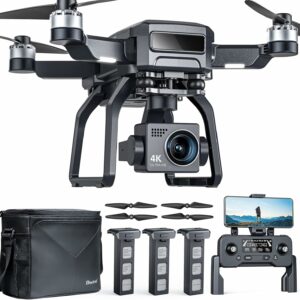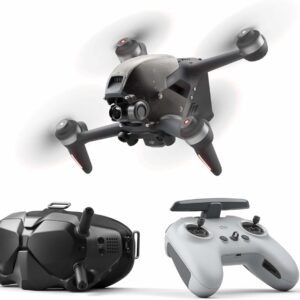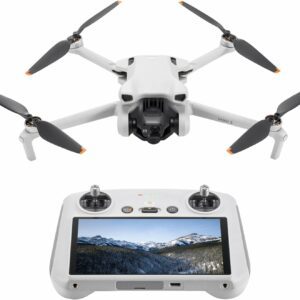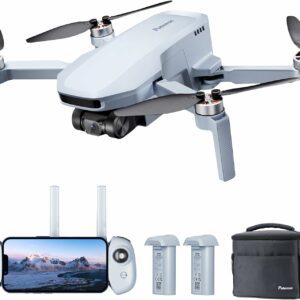Night Vision & Thermal Imaging Drones
🔍 What Are Night Vision & Thermal Imaging Drones?
These specialized drones are equipped with infrared or thermal sensors that allow them to capture heat signatures and see clearly in darkness or through smoke, fog, or foliage. They are indispensable tools for professionals in public safety, security, firefighting, agriculture, and wildlife observation.
Showing all 4 results

Bwine F7 GPS Drone with 4K Camera & 3-Axis Gimbal – Long-Range, Night Vision, Beginner-Friendly Quadcopter
- Camera:
- Flight time (m):

DJI FPV Combo (CRTDJPFPVCOMBORB) – Immersive First-Person Flight with 4K/60fps Camera and Low-Latency Transmission
- Camera:
- Flight time (m):

DJI Mini 3 (DJI RC) – Lightweight 3-Axis Gimbal Drone with 4K Camera
- Camera:
- Flight time (m):

Potensic ATOM SE GPS Drone with 4K EIS Camera – Lightweight, Foldable Quadcopter for Beginners
- Camera:
- Flight time (m):
🔥 Why Are Thermal Drones Important?
- Thermal drones expand your visual capabilities beyond what standard RGB cameras can capture. They can:
- Detect human or animal presence in darkness
- Identify hotspots in wildfires or industrial equipment
- Locate heat leaks in buildings for energy audits
- Improve nighttime security and border patrol operations
🎯 Use Cases for Night Vision & Thermal Imaging Drones
Search and Rescue Missions
Drones can quickly locate missing persons using body heat signatures—even in complete darkness, rough terrain, or under heavy forest cover.
Firefighting & Emergency Response
Thermal drones allow firefighters to detect hotspots, assess the spread of fire, and improve decision-making in life-threatening conditions.
Law Enforcement & Surveillance
Agencies use these drones for nighttime surveillance, perimeter monitoring, or tactical missions without the need for bright lighting that may alert suspects.
Industrial & Utility Inspections
Thermal imaging helps detect equipment failures, overheating components, and structural weaknesses in infrastructure, solar panels, and pipelines.
Agriculture & Wildlife Monitoring
In precision agriculture, thermal drones track livestock or monitor crop stress due to water shortage. In wildlife, they help monitor nocturnal animal movement.
📷 Key Features of Night Vision & Thermal Drones
- Thermal Imaging Sensors (Radiometric or Non-Radiometric)
- Night Vision IR or Low-Light Cameras
- Dual-Camera Systems (RGB + IR)
- Real-Time Heat Mapping and Analysis
- Long Flight Time and Stable Hovering
- High-Precision GPS & Autonomous Flight Modes
❓ Frequently Asked Questions (FAQs)
🔸 How do thermal drones work?
They detect heat emitted by objects and convert it into a visible image using infrared sensors. Warmer objects appear brighter, helping identify people, animals, or overheating equipment.
🔸 Are thermal drones legal to use?
Yes, but laws vary by country. Commercial use often requires licensing or regulatory approval, especially for surveillance or industrial applications.
🔸 What industries benefit from these drones?
Sectors like public safety, law enforcement, firefighting, energy, agriculture, and wildlife research gain valuable insights from thermal aerial data.
🔸 Can night vision drones fly in total darkness?
Yes, drones with infrared or starlight night vision cameras can operate effectively in low-light or complete darkness, depending on their sensor quality.
🔸 What’s the difference between thermal and night vision?
Thermal imaging captures heat signatures, while night vision amplifies visible light. Thermal works in pitch dark and through smoke, whereas night vision requires at least minimal ambient light.
